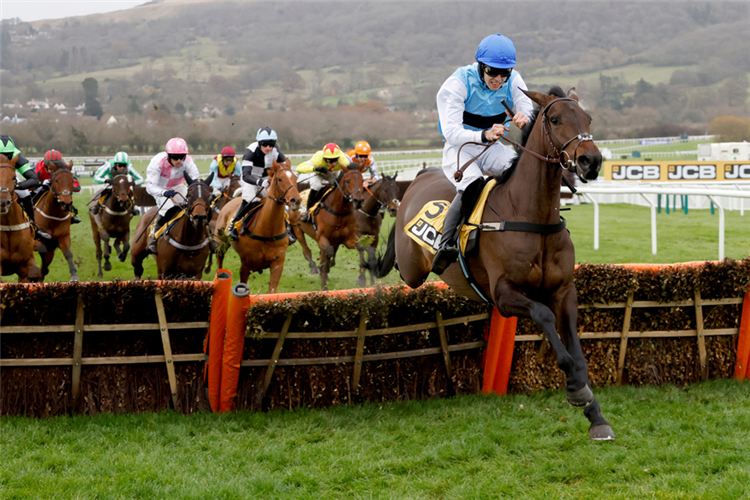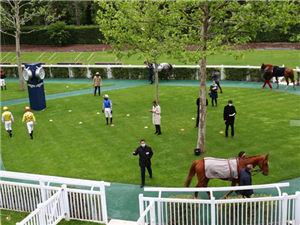
French racing has the strongest cross-country calendar of any racing nation with the discipline staging events throughout the year at a range of tracks including multiple legs of the famous Crystal Cup European Cross-Country Challenge. Tackling cross-country fences requires plenty of technical skill and experience.
The obstacles are designed and built to represent a safe but similar challenge to what would be naturally found in the countryside, including mounds and banks. Some races leave the racecourse itself and cross through lakes, open fields, roads, and steep hills.
Fence types are often complex and unique shapes including figure of eights, banks, hedges, ditches, brooks, and walls. Oxers have two rails close together to make the jump wider. It may have two top poles of differing heights to increase the difficulty. Bullfinches is a type of fence often seen in eventing. It is made up of a solid base, with brush on top that is several feet high and is meant to be jumped through rather than over. Due to the height, the horse cannot see through to the other side making this an extra challenge for any cross-country or steeplechase participant.
On Sunday Pau stages one of biggest cross-country events of the year in France with the Listed Grand Cross de Pau - Prix Gaston De Bataille (6300m) which includes unique obstacles such as the "Tree Trunk" (Tronc d'arbre) and "The Bordeaux Bench" (Banquette de Bordeaux). The runners face more than 30 challenging fences and banks to navigate.
This race marks the beginning of the famous Crystal Cup European Cross-Country Challenge 2022. The series consists of eleven individual races spread out from February to December concluding at Cheltenham (UK). Six nations are involved including France, England, Belgium (who stage the Great Flanders Steeple Chase at Waregem), Poland (at Wrocław), Italy (Gran Premio Merano at Merano) and Czech Republic (the famous Velká pardubická at Pardubice).
Other French courses that take part in the Crystal Cup are: Fontainebleau (April), Le Lion-d'Angers (May), Craon (September) and Compiègne (November). The Le Lion-d'Angers leg is considered one of the toughest tests of endurance as the Anjou-Loire Challenge (7300m) is the longest race in the world!
In 2021, French trainer and jockey combinations dominated the final leader board with Patrice Quinton a clear winner in the trainer's division beating David Cottin in second. The top five jockeys were all French too, with Felix De Giles beating Clement Lefebvre, Jouin Olivier, Adrien Fouchet and Marc-Antoine Dragon. Vol Noir de Kerser was the leading horse.
A further initiative to encourage Cross-Country racing in France is the 'Trophee National du Cross' with the aim of increasing the popularity and to boost the Cross-country scene. It replaces the former French Cross-Country Championship. The series involves fourteen races from January to October hosted by a range of smaller venues including Mont-de-Marsan, Lignieres, Corlay, Vittel, Granville and Saumur amongst others.
More than fifty courses in France stage cross country racing and this discipline offers an exciting and unique spectacle for racing fans but a demanding and different test for horse and jockey. The races can provide unique moments including last month at Pau when jockey Paulin Blot managed to remain onboard his mount after a slipping saddle at the second fence. The now famous 'Prix des Benevoles' at Castera-Verduzan of July 2014 has been viewed on YouTube nearly a quarter of a million times, and this comes as no surprise with it simply one of the most dramatic scenes witnessed on a racecourse. We suggest you sit back, come along and enjoy the ride!







